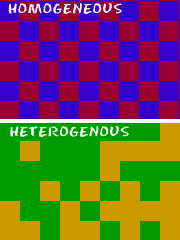Hey guys! It’s Teemster! :D
I’m back, and I’m going to be talking about something new today! I’m not going
to make you guess like last time… but I will tell you a little about it. Today
we are going to talk about Chemical Bonds, as you may know. This will be a fun
topic to talk about!
Do you know anything about
the atomic structure? Well, you’re going to need to know about that first. An
atom consists of three particles, protons, neutrons, and electrons. Protons are
positively charged particles that are bunched up together with neutrons
forming an atomic nucleus. Neutrons are neutral, meaning they have no charge.
Those two are bunched together, while electrons fly around them. Electrons are
negatively charged particles that circle around the nucleus unevenly. Pretty
simple, right?
These electrons are separated
into electron shells. Each shell can hold up to a certain amount of electrons.
The first can hold 2, then 8, 8, 16, 16, 32, 32… It goes like that. When the
outer shell of an atom is full, the atom is a stable atom. However, if the atom
isn’t full, then it is unstable. Easy, right? When the electron shells rapidly
orbit around the nucleus, it makes the cloud. Cool, right! Wait… not a puffy cloud… It’s an atomic cloud. It is visually seen because the
electrons orbit rapidly around the nucleus! Now, that’s what I meant!
Not this... ^^
This... *Arrow Down*
:D
Haha you get that? Hopefully you
do, because if you don’t… then you won’t get anything else that I’m about to
talk about! Anyways, lets get back to the scientific stuff. In the outer
electron shell of an atom, the electrons are called valence electrons. Valence
electrons are electrons that are on the outer electron shell. Valence electrons
are electrons that can be taken away or shared with other electrons.
When two or more atoms share,
take, or give electrons, its called chemical bonding. When an atom shares an
electron with another atom, it would make it a covalent bond. I think of
covalent bonding as the two unhappy atoms work together and combine, literally,
and become the best of friends! When an atom takes an electron from another
atom, it would make an ionic bond. When an atom takes an electron from another
atom, the atom that gained an electron becomes a negative atom. The atom that
lost an electron becomes a positive atom. Then, because of electrostatic
attraction, opposites attract. Electrostatic attraction makes the two, or more,
atoms combine because of them being positively or negatively charged. So, I
think of it this way. One atom is being mean, and takes an electron from
another atom. Then, the atom randomly likes the other atom and they become
besties! So, basically, all atoms become friends at the end of the day! J











